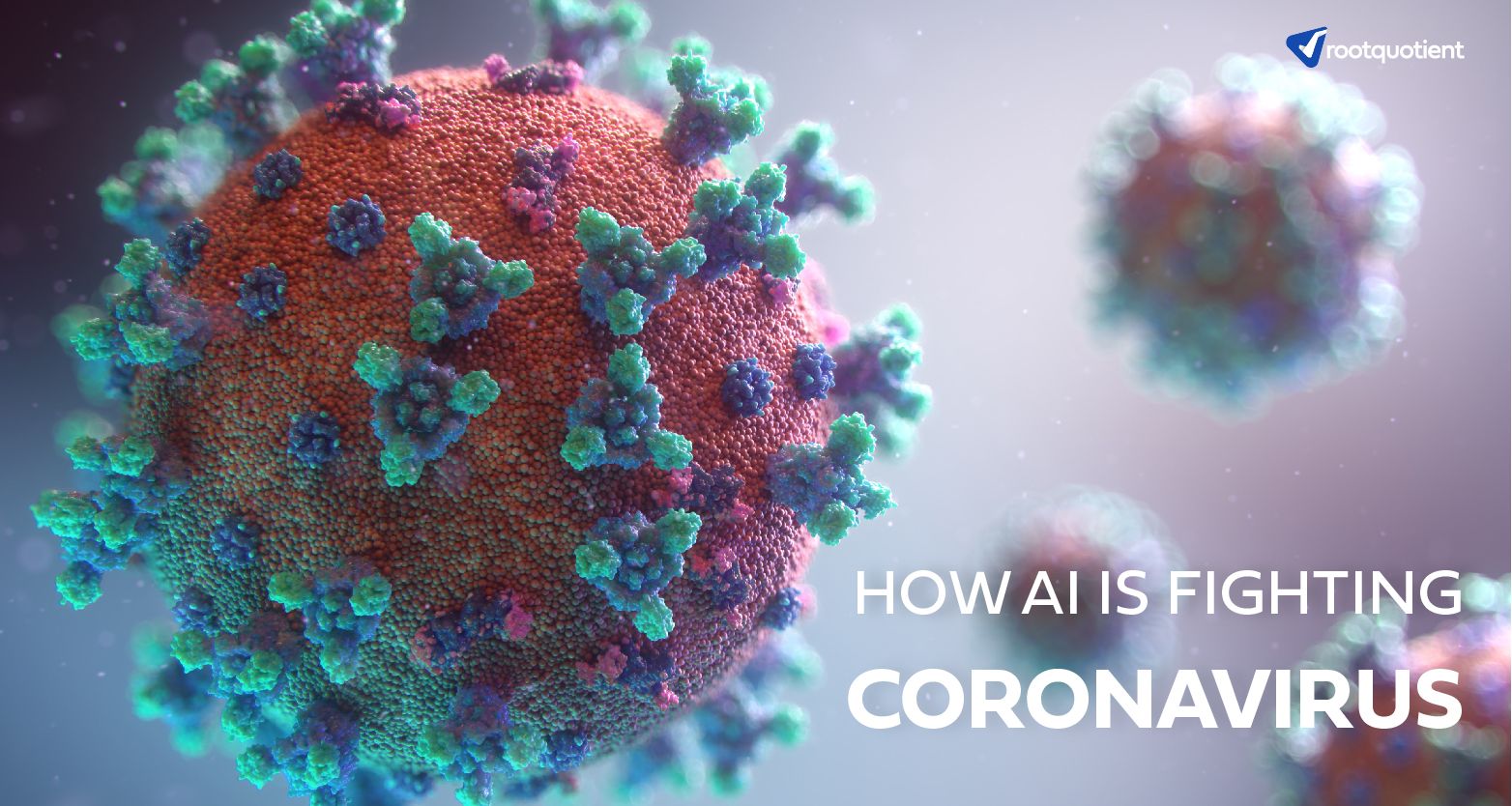How can Artificial Intelligence Help Fight Corona Virus
Coronavirus or COVID-19 has not only seemed to have stretched its arms all over the world but the term has filled our newsfeed, social media, messages, throughout the day. With over 3 billion people currently under lockdown in different parts of the world, it does seem to be a weird and scary time to live and pass through. Everyday updates are given on the trends of the disease affecting people in various ways including economy, employment, trade, lifestyle and much more. Regional, national and international updates give us an idea of the magnitude of the impact this pandemic has had so far.
How do these data contribute to finding solutions for the pandemic? How can we ensure it is wiped away for good? As we know, AI thrives on statistical data to combat any issue. For a medical emergency and a highly sensitive situation in the entire world, how do we use AI to combat various problems faced currently? Which fields are making swift use of AI to tackle and prepare for the future that has been jeopardized temporarily?
1. Identifying those infected
This is popularly seen in China where thermal systems and facial recognition are used to detect if a person has a fever. Another monitoring system called the Health Code is used to assess a person’s travel history, time spent in virus hotspots, possible exposure or contact with an affected person. Each person is assigned a colour code using an app like WeChat or AliPay to indicate if it’s safe for them to socialize. Considering that China is now out of lockdown and still following this shows the importance of AI in everyday activity even after a massive reduction in the spreading of the virus. This could be an epitome for other countries to follow suit.
2. Assessing researches
As the virus became a pandemic, there were innumerable researches from all over the world. From trying to understand how it spreads to finding a cure for it, there are already about 30,000 papers published all over the world. With so much information from experts, the US government, in collaboration with academia and tech companies, has sanctioned a project to let AI researchers access to all these papers to collect data and similarities in findings and identify a pattern to decode all the mysteries surrounding the Coronavirus. All these papers have been fed into the AI system to put together a convoluted study that explains every aspect surrounding the COVID-19.
3. Finding a cure
In the initial stages of the epidemic in Wuhan, Chinese scientists were quick enough to decode the DNA of the virus and present it in a public database by the 10th of January. It was easy for the researchers to set to work even without an actual case study in hand. This helped in working on a design for the vaccine and find possible drugs that could work. Scientists in South Korea and the United States have identified commercially available antiviral drugs that could be used for now to treat COVID – 19 using the deep learning methods. AI has also assisted in identifying the viral similarities among SARS, MERS and Coronavirus. Considering that finding a drug that completely cures it is a slow process and involves trial and error, with AI in place, it did not take more than a few days to at least temporarily tackle the major effects now.
4. Detect an outbreak
A Canadian start-up called BlueDot specializes in tracking infectious diseases. Using government documents, social media updates, hospital statistics, etc., a pattern is identified to detect a possible outbreak. In fact, BlueDot predicted the outbreaks in several parts before the Centres for Disease Control and Prevention and WHO announced it publicly. Prediction helps in better preparation and steps to control the spreading of the Coronavirus.
5. Drones for delivery
Human contact is a definite no during this period. What better way than to depend on machines and AI for delivery of essentials like grocery, food and medical supply? In the Xinchang County in China, Terra Drone was actively supplying medical goods to people. UVD robots from Blue Ocean Robotics uses UV rays to automatically sterilize food and deliver them.
Know about AI Technology in our blog,Is Artificial Intelligence (AI) taking over the world? .
There are several indirect ways in which companies use AI to assist in combating the pandemic. Google’s DeepMind has been actively trying to understand the proteins that make up the virus and keeping them publicly available for researchers to access. A 13-year-old boy from Virginia successfully printed a mask for his ailing uncle using his 3D printer. This could lead the way for large organizations to help fight the current shortage of masks.
Considering that most of the world is still reeling under the impact of COVID-19, China seems to be in the final stages. AI can learn from the countries that have come out of it and prepare the other countries well ahead. Monitoring and testing are crucial to controlling the spread, according to WHO. AI is definitely the trump card to overtake the speed of the Coronavirus and heal the world sooner than expected.



